Introduction into text generation
Contents
Introduction into text generation¶
Alex McLean: forkbomb.pl (2001)¶
my $strength = $ARGV[0] + 1;
while (not fork) {
exit unless --$strength;
print 0;
twist: while (fork) {
exit unless --$strength;
print 1;
}
}
goto 'twist' if --$strength;
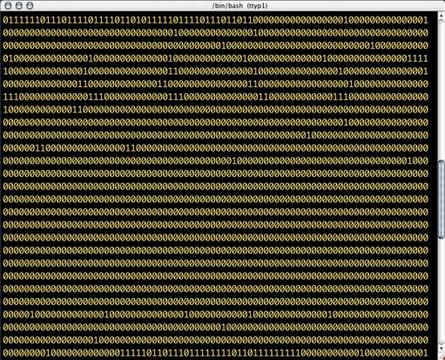
A fork bomb is described as a program or shell script which (either intentionally or accidently) creates new processes repeatedly using the fork() system call. New processes are created so fast that within no time the process table gets filled up and the system comes to a grinding halt.
This particular fork bomb outputs binary data while flooding the machine. This data is patterned partly by the algorithm represented in the code, and partly by the operating system it executes within. A computer operating system is in a constant state of change, and so the script will produce different results every time. The output is an artistic impression of your system under strain. (Source)
Jasper Rigole: 500 letters (2010)¶
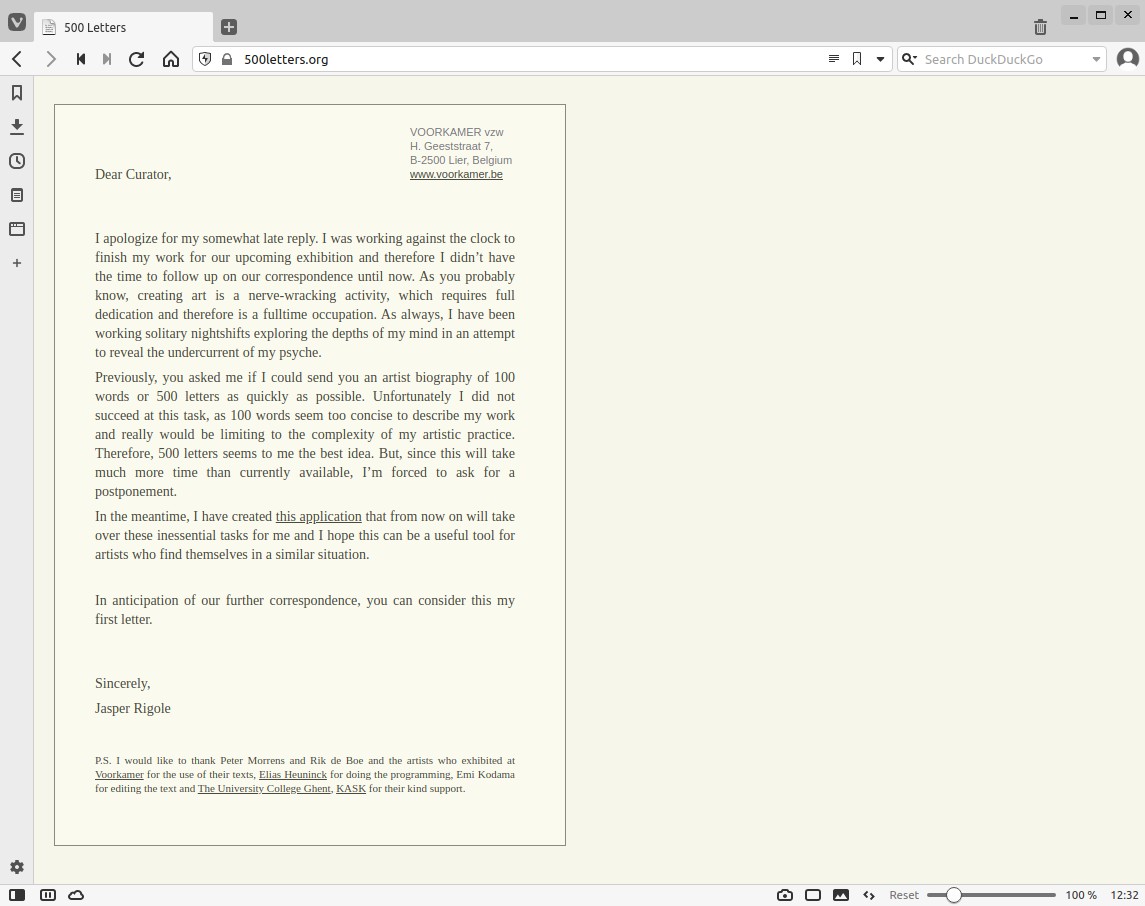
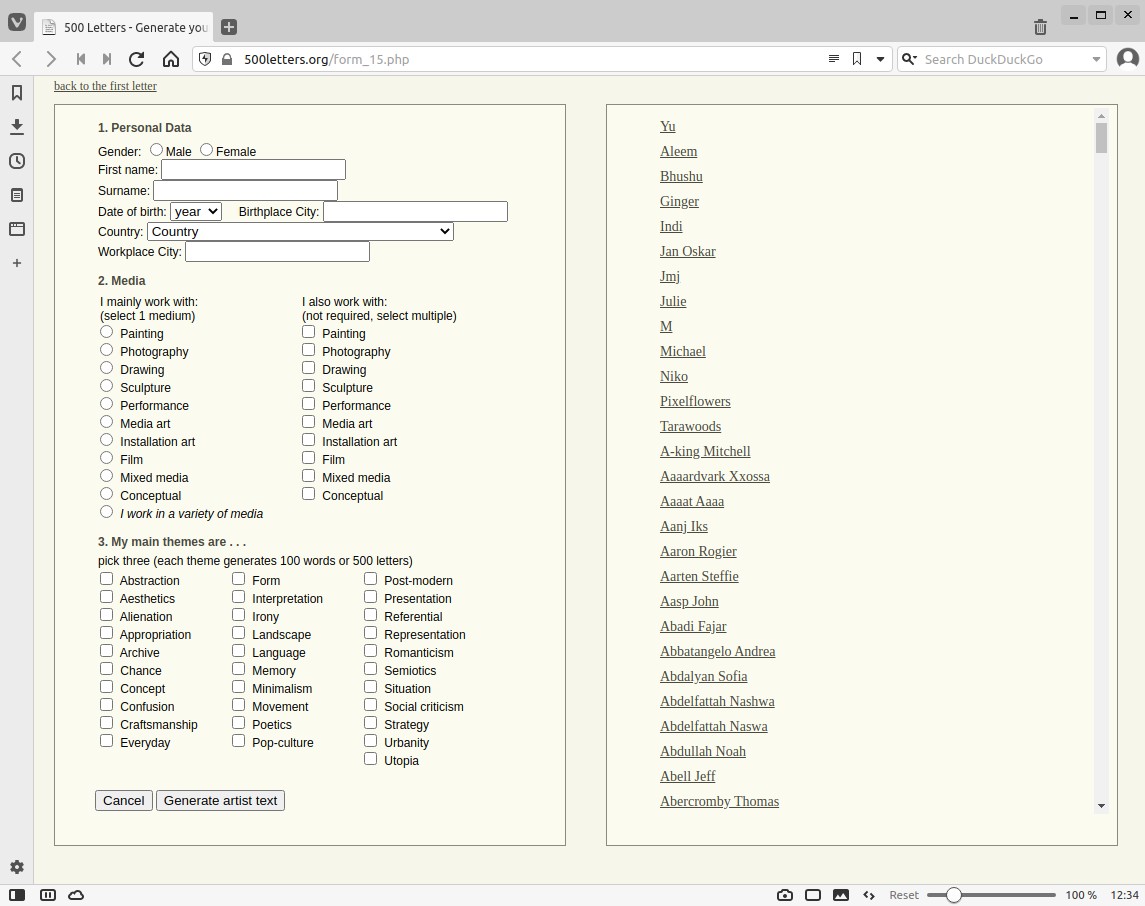
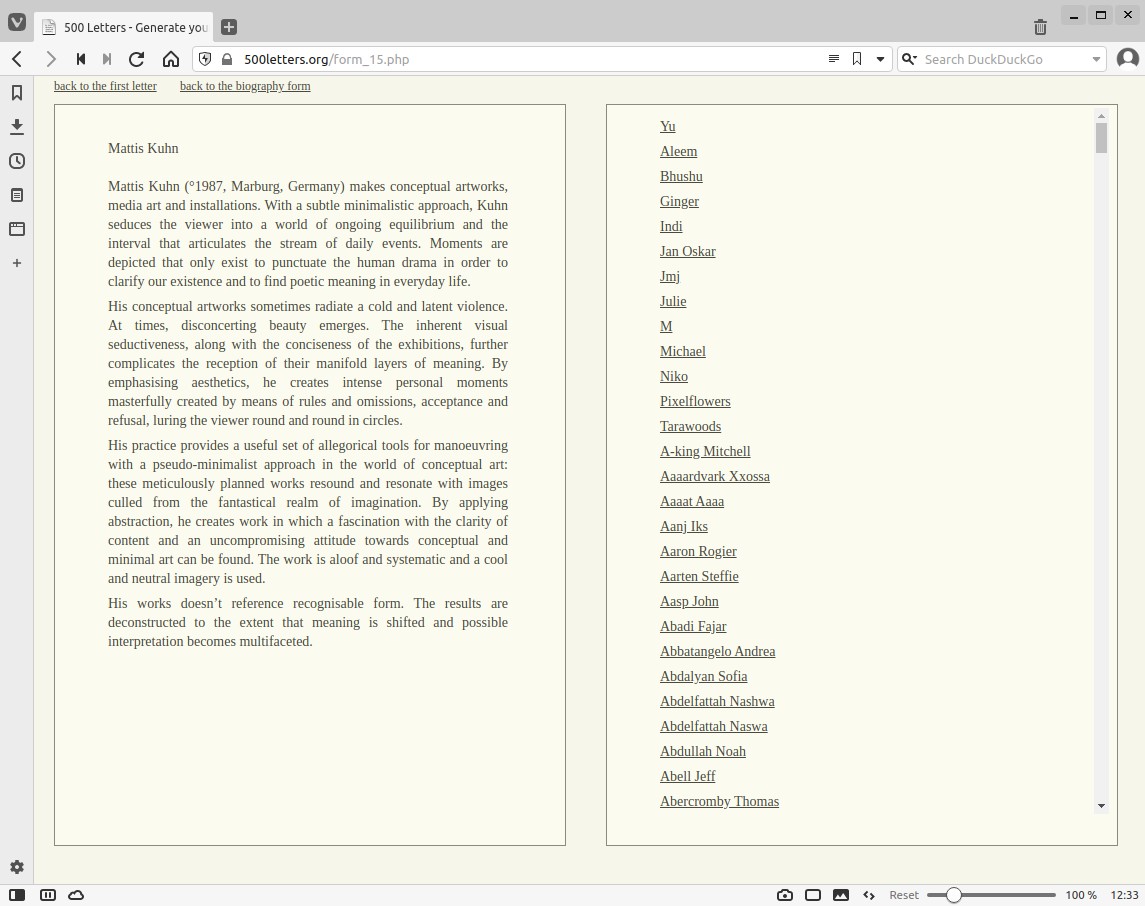
500 Letters is an artist text generator that draws on a database of sentences written in the all too characteristic vocabulary of artists’ statements. Supplied with a combination of keywords (for example irony, landscape, appropriation, semiotics etc.) and a specific medium, the work spews out a plausible artist’s statement. While this automatic biography generator is itself of course tinged with irony, some artists may find it a useful tool for generating their own texts. (Source)
Allison Parrish: I Waded in Clear Water (2014)¶
Project page on github.
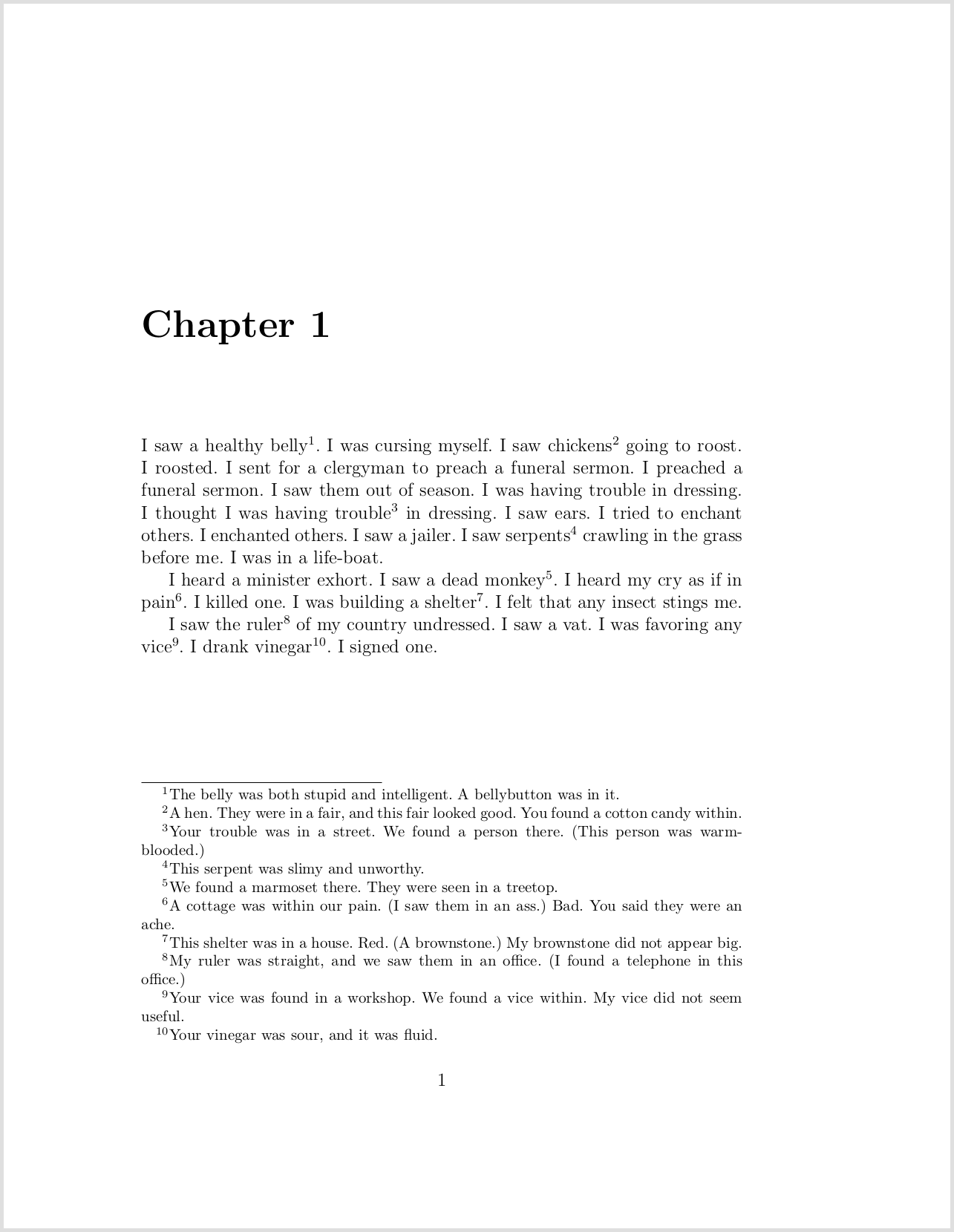
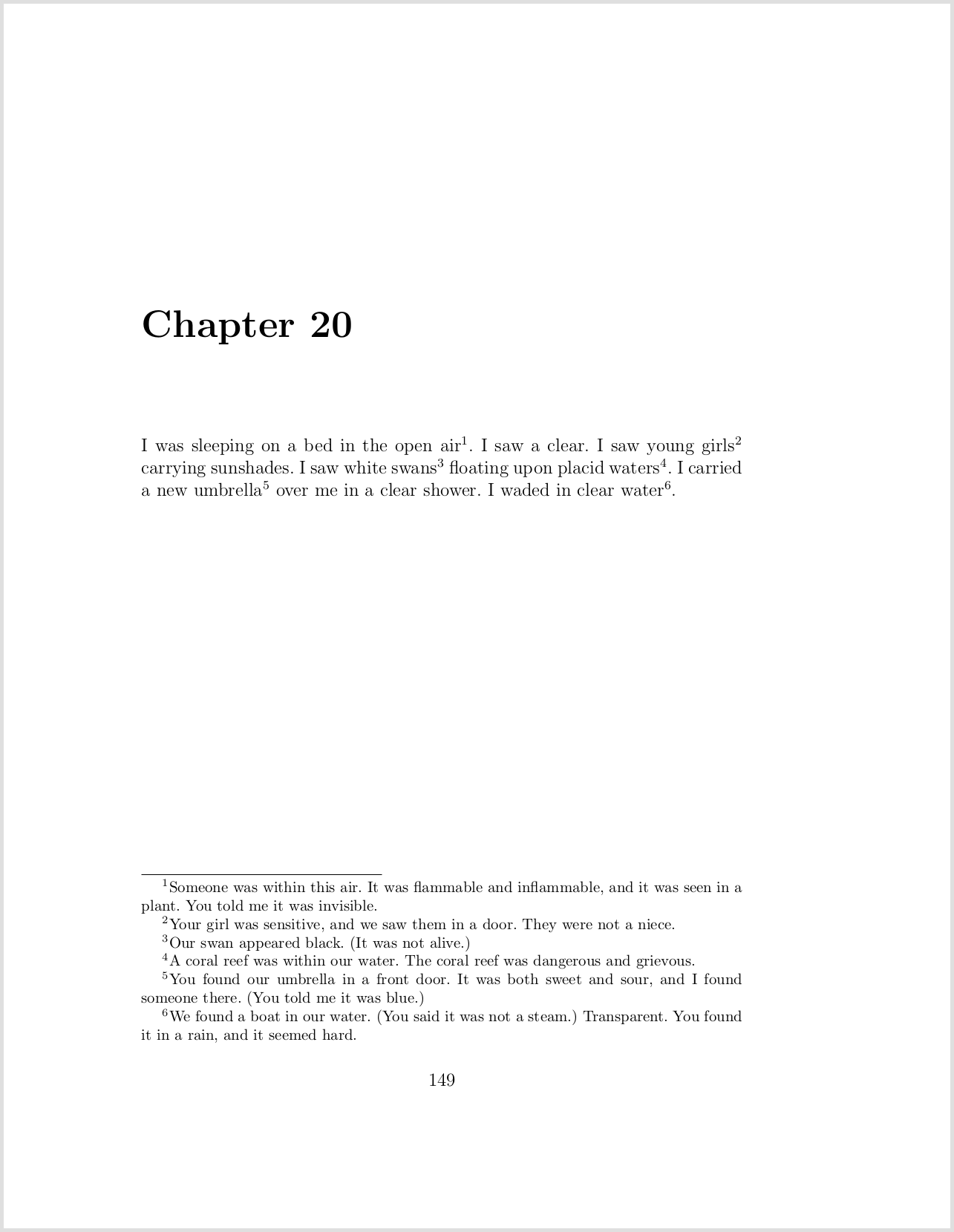
This novel was generated from the text of Gustavus Hindman Miller’s Ten Thousand Dreams, Interpreted. The “What’s In A Dream” section of Miller’s book functions as a dream dictionary: you look up a word, and find out what it means to dream about that word’s referent. Each word has multiple interpretations, and most of these interpretations can be broken down into what I call an action and a denotation:
To see an oak full of acorns, denotes increase and promotion.n this entry,
See an oak full of acornsis the action, andincrease and promotionis the denotation. The text of this novel was made by extracting the actions and changing them to first-person, past-tense sentences:I saw an oak full of acorns.The denotation for each action is scored using a sentiment analysis algorithm, and the sentences are printed in order by the sentiment of their corresponding denotation, from most negative to most positive. (According to the sentiment analysis algorithm, the first sentence of the novel, “I saw a healthy belly,” is the worst thing that can happen in a dream; the last sentence, “I waded in clear water,” is the best thing.)
Elaborations, in the form of footnotes, are provided for many sentences. These elaborations are generated using information in ConceptNet (in particular, the
IsA,HasProperty, andAtLocationrelations) and WordNet (for part-of-speech checks, synonyms, and antonyms). (Source)
DISNOVATION.ORG Predictive Art Bot (2015-18)¶
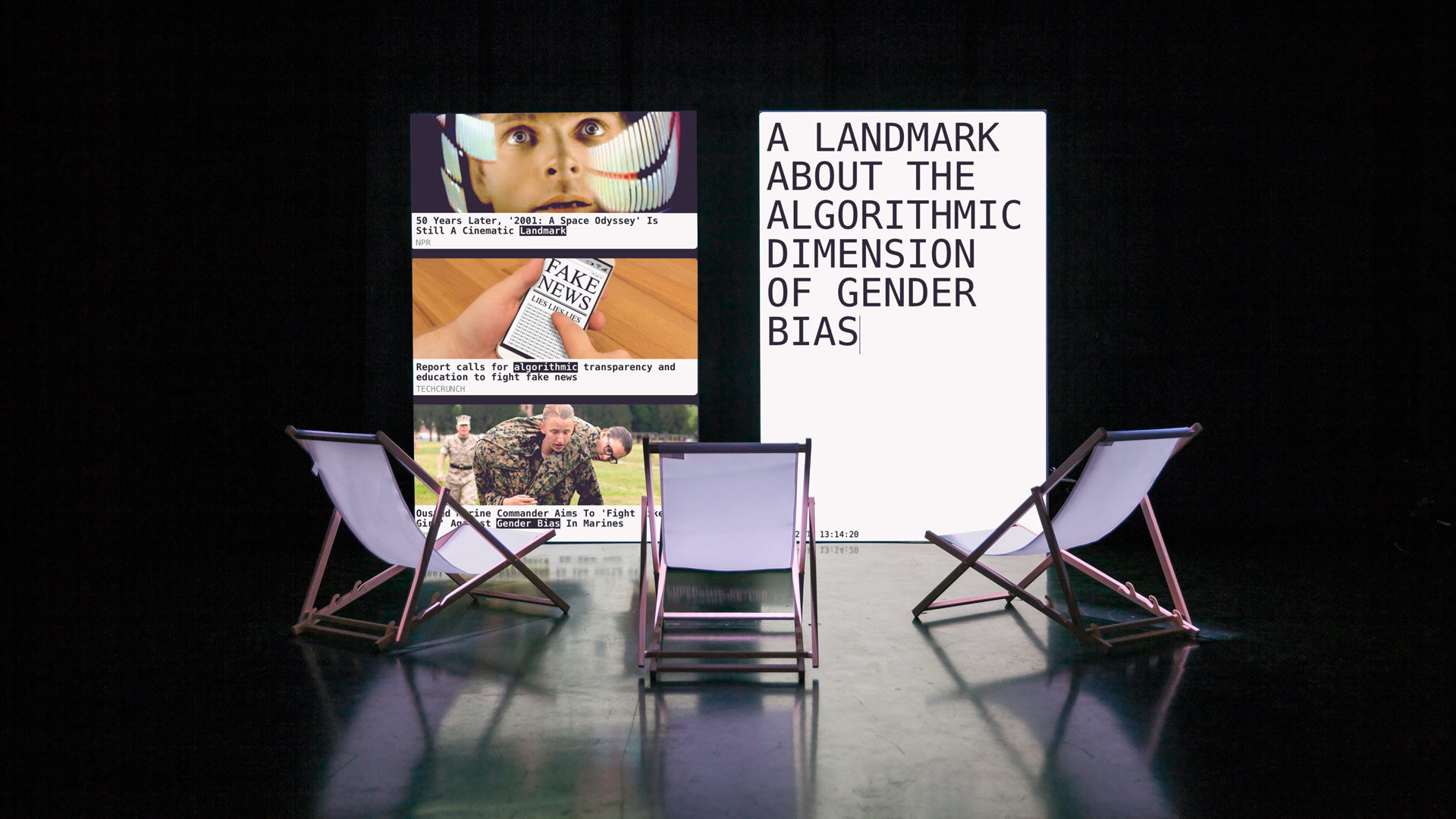
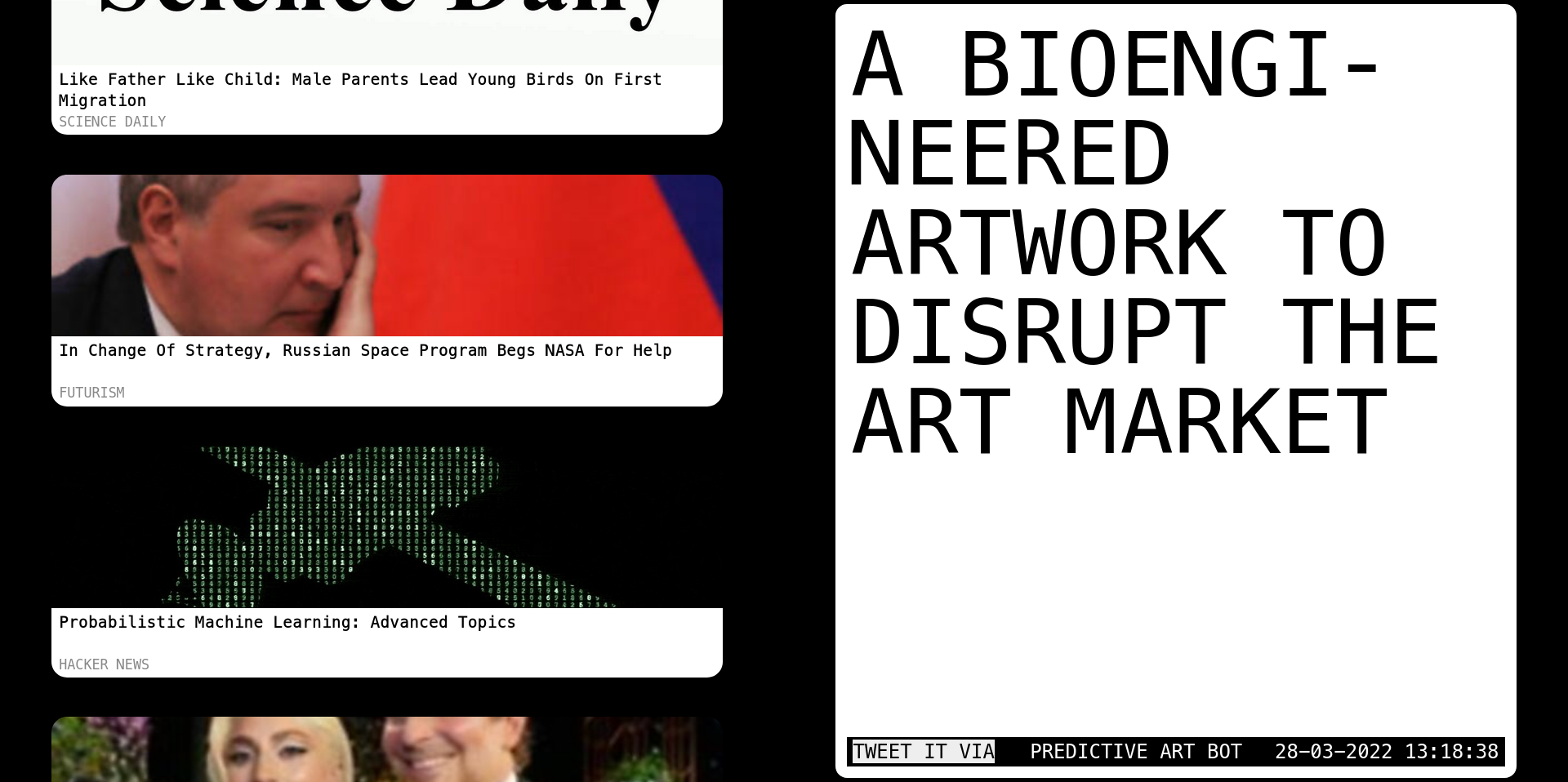
AN ALGORITHM THAT TURNS THE LATEST MEDIA HEADLINES INTO ARTISTIC CONCEPTS.
In the age of hyperconnectivity, the perverse implications of media echo chambers are becoming more and more obvious. Groups of similar behaviors are being partitioned in filter bubbles, while the few massively reposted topics tends to monopolize most of the available attention. Such insular echo chambers strongly affect ways of thinking, resulting in increasingly homogeneous imaginaries within groups of like-minded people.
Predictive Art Bot caricatures the predictability of media influenced artistic concepts, by automating and skirting the human creative process. But beyond mere automation, it aims to stimulate unbridled, counter-intuitive and even disconcerting associations of ideas.
To do so, it continually monitors emerging trends among the most influential news sources in fields as heterogeneous as politics, environment, innovation, culture, activism, or health… On this basis, it identifies and combines keywords to generate concepts of artworks in a fully automated way, ranging from unreasonable to prophetic through absurd. Each prediction becomes a thought experiment waiting to be incubated, misused or appropriated by a human host. (Artist’s website)
Gregor Weichbrodt: Eine Liste (2020)¶

Eine Liste
durchsucht aktuelle Nachrichtentexte nach zählbaren Dingen und generiert Listen
ist eine Website und ein Twitter-Bot (@EineListe), der alle paar Stunden eine neue Liste auf Twitter veröffentlicht
bezieht seine Daten aus einer offenen JSON-API, die für dieses Projekt gebaut wurde
Julia Nakotte: Potentio Poet (2021)¶
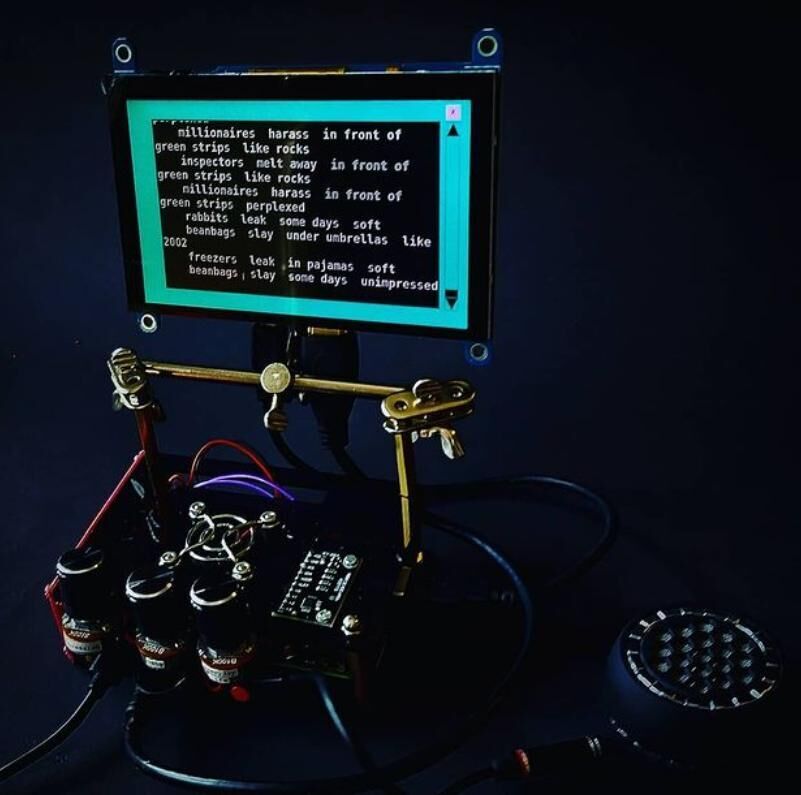
The Potentio Poet is an independent, authentic and creative author, that generates an endless poem based on a simple random-function in Python code.
I selected nouns, verbs, adjectives and locations and rated them on a scale from 1 (a little) to 3 (much) in the categories everyday life, city and depression. Each word received a score in each of the three categories. This resulted in 27 possible combinations. A third person decides on which rating combination the next line of the poem is based by turning three analog potentiometers. The code selects a random noun, a random verb, a random location and a random adjective from the matching combination and strings them together in an random order. The potentiometers can be combined differently for each poem line. If the person wants to make the poem more depressing, he or she turns up the depression potentiometer.
The focus of this work is not on the output or the presentation of the technical possibilities, but on the staging of the machine as an author. The potentio poet is presented as an independent author, while influencing persons are downgraded to assistants, who only select and rate words or chose the base of a poem line . Although the potentio poet uses only a simple random function for its part of the work, this is enough to make it impossible for us to foresee the total result. Is this enough to call the potentio poet an author? Why should it not be enough? In what ways are the potentio poet’s influences different from the influences that affect human authors (like a language, experiences, education)?
If there is potential for discussion even with such a simple code, it’s exciting what kind of conversations we will/should have in relation to text-generating AI and more complex technologies. (Source)
